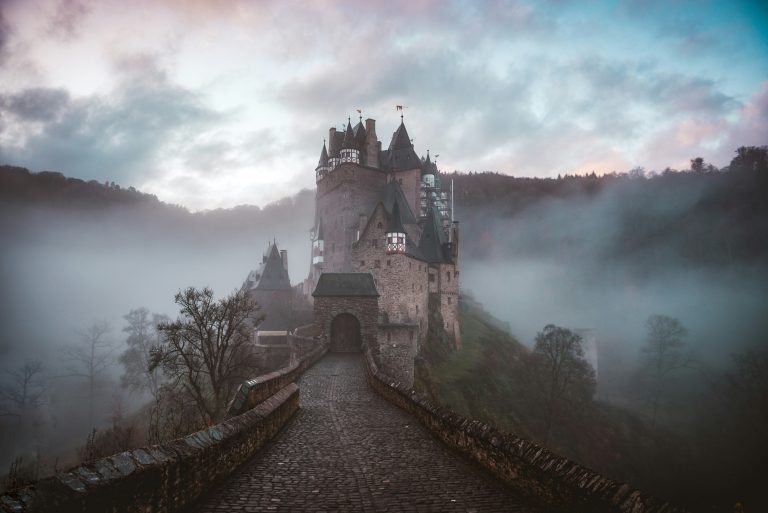The Challenge of Creating Powerful Settings
Setting is so often overlooked or pushed to the background in fiction. But it is, perhaps, one of the most powerful elements of a story. If you aren’t thinking carefully about the settings in your story, I hope you’ll think again. Setting isn’t just where your overall story is set, it’s all those locations you set invidual scenes in.
We spend a lot of our time at work and home, and occasionally at those restaurants and coffee shops, but that is ordinary life. And while we want to show our characters in their ordinary lives (at least sometimes), readers don’t want “boring.”
So the challenge for novelists is to come up with settings that are interesting. But settings are nothing by themselves; they must be experienced by the characters in your story. And the more you can create emotional connection to setting for those characters, the more alive the places will become.
Settings That Trigger Emotion
I had you think about places in your past that are emotionally charged to you. By thinking about specific places that have emotional triggers, it may help you come up with such places for your characters. I call those places “connected settings”—settings we connect strongly to emotionally.
Does your protagonist, for example, have a strong emotional connection to one or both parents (who may still be living or have died before your story starts)? By having your character visit a place that holds powerful memories of that parent, either positive or negative or both, those emotions can drive a scene, and the memories triggered there can induce conflict.
Let’s say your protagonist has just had a huge fight with her mother over the man she plans to marry. She might drive back to her childhood home, or just go sit in the bedroom in her parents’ house in which she spent her childhood. There, she might remember the vicious fights her parents had before they divorced and how painful they were to listen to. She might, at that moment, feel a strong determination to never be like her mother. Or, she may suddenly be afraid to commit to marriage, fearing her marriage may end up just like her parents’.
Conflict, Conflict, Conflict!
The place she is in can be a great tool to increasing her inner conflict, which is what you want. Inner conflict emotionally drives the character toward her visible goal in your story, so anything that can “stir up the waters” is going to be worthwhile. If she instead went to Starbuck’s after having a fight with her mother, she may just order her Americano coffee, blow it off, and get on with her day—and not had the intense emotions to mull through that a “connected” setting would have on her.
The most powerful scene to me in the movie Minority Report is the one in which the protagonist, John Anderton, played by Tom Cruise, takes the female Pre-Cog, Agatha, to his previous home, which his ex-wife, Lara, still lives in. They broke up years ago because their son was kidnapped and assumed murdered, and they couldn’t bear the loss. Now, they hardly speak to or see each other, but John needs a temporary refuge for Agatha in order to solve a crime.
Setting Brought to the Forefront
Lara and John end up in their son’s room, and for a brief moment, it’s as if the fast-action plot comes to a screeching halt in a moment of incredible poignancy. This scene, to me, is the very heart of the movie. It’s a highly unexpected moment—for the viewer and the estranged couple. For Agatha stops them in their tracks by saying, “There is so much love in this house.” She then “sees” the future their dead son would have had, recounting, “He’s ten years old . . . he’s surrounded by animals. He wants to be a vet . . . he’s in high school. He likes to run. Like his father. . . . he’s twenty-three and in love . . .”
And although what Lara and John hear breaks their hearts—this future their son would have had—it somehow breaks through their pain, and at the end of the movie they get back together and Lara’s pregnant (but not until a lot of suspenseful minutes pass on the screen!). That scene, that moment, tied in hugely due to setting, is paramount in John’s character arc. It is the scene that propels him to the place of needed healing. Without it, he would never get there. He would wallow in misery forever.
Key Moments in Your Story Need Key Settings
Could any other setting have had such a powerful effect on the characters or viewers? What could be more painful than sitting in your dead child’s bedroom, amid all those memories—the sweet memories before the tragedy? How do you think that scene would have felt it Agatha said those words to Lara and John in a crowded Starbuck’s?
Here’s an assignment for you: Watch one of your favorite movies or read one of your favorite books. Jot down the setting of every scene and the emotional connection (if any) to each and every place for the POV character of that scene. You may find there isn’t much—or you may start noticing how a great writer will create “connected settings” for strongest impact.
Choose the Best Place for Your High Moment
Whether setting is a huge element in your story because of your premise or not, you can make setting be powerful and impacting by choosing each place carefully. For each scene, consider your high moment and the plot point you are going to reveal. Consider the dynamics and conflict of the characters in that scene and ask: Where can I put these characters to generate the most conflict (inner and outer) and the strongest emotional quotient?
You want every scene to have the highest EQ (Emotional Quotient) possible. Why? Because conflict is story, and emotions are needed for conflict. And strong emotions are needed for strong conflict and high stakes. If your characters feel nothing at all for the place they are in—guess what? The readers won’t care either.
You may not think that matters, but it does. Do you care where you live? Where you work? Where you spend your free time? Does place matter at all to you at any time? Never? Are you human? Hmmm . . . I wonder.
One Last Very Important Thing
Although I could spend a whole post on this topic, we don’t have time. There are three months left in the year and five more key pillars of novel construction to cover. And even though the last ones will be discussed only briefly, that doesn’t mean they’re not all that important; they are. So please don’t assume that because I am only going to spend a few paragraphs talking about weather that it’s not an important element in your novel.
Let me just say this, and maybe I don’t need to say much else: weather is important! I mentioned how many writers neglect to show much at all about setting, often completely neglecting to show where their characters are in many of their scenes. That’s like erasing the world and having people floating in space (which is also a setting, so I suppose they would be floating in nothing). They need to be shown where they are and why and how they feel about each and every place in your novel.
Weather Is Not (or Should Not) Be Boring
And that is how I feel about the weather. Weather is boring, you say? Really? Are you completely unaffected by a thunderstorm on a hot summer night? A tornado or hurricane headed your way? The crisp fall air in the Northeast, with the trees exploding in color? What about being at the top of a ski slope in a whiteout, snow blinding you and freezing your face and hands?
Just as you need to spend time really thinking up creative settings, you need to spend as much time crafting the weather in your novel. Characters, like real people, react to weather in those same ways they react to place. We have memories and emotional connections with different types of weather. Weather triggers very strong memories, just as a place or a smell or a sound might. Weather can make our hearts soar with joy or catapult us into deep depression. Weather can often be useful as a plot device.
Use weather wisely. Let it affect your characters’ moods and behavior. Let it impact the plot, create complications. Weather can cause delays and accidents. It can obscure vision, or make someone weak or faint. Weather is a terrific tool, and again, needs to be shown and filtered through the POV character’s mind.
Some settings come with a specific “weather package,” and if so, you need to show it fully. If your story is set near the North Pole, that weather is going to play a huge part of your story.
Load Up on Sensory Details
Don’t ignore setting, and don’t ignore weather. Let the reader know, richly and fully, exactly where and when your character is. Show how the place and the weather feel, smell, sound, and taste. Establish and ground each scene quickly in place and weather (see this post on Establishing Shots), and then use both of those elements to generate emotion and conflict in the interest of your plot. Don’t be boring and just throw out a line here and there about the weather just because you feel you have to!
Any thoughts about setting or weather? How important is it to you to have strong settings and dynamic weather in the novels you read? Any examples you can give of a scene in a book or movie that hit you hard with the significance of the setting? Share in the comments.
Featured Photo by Robert Lukeman on Unsplash












Helpful post. A great reminder of how setting and character emotions are connected. I have a question on the present tense. I was thinking of using it, but have been warned against it so many times that I just want to be sure. So, how can I know if present tense is a good choice for my story, and if so, is there anything specific I should know? Thanks!
Your question is a wholly other topic. I’d suggest Googling the question and doing some reading on what different people say about that tense.
Agreed! I learned from you about using action to determine the setting. It was an a-ha moment as I crafted my novel.
Great post. Love the weather angle. My characters are all animals (fantasy) and the weather plays a huge role in their development and fate. Thanks.
I Like to think of ‘setting’ as the other character in the scene. Wind and sun are motion and light. Walls constrain sound, voices and movement. Breezes cary fragrance and distance hides conversations. As a reader, when I recall an old book, it is not the tension I remember, it is the vision of the scene. Scout’s from porch to Gandalf at Bilbo’s front door.
Setting may not be king, but is certainly the view behind the king.